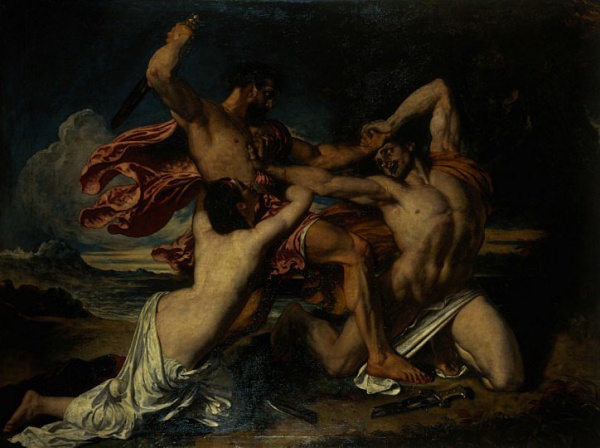Facts About The Combat: Woman Pleading for the Vanquished
"The Combat: Woman Pleading for the Vanquished" is a compelling oil painting by English artist William Etty, created in 1825. Now housed at the National Gallery of Scotland, this piece captures a dramatic moment: a defeated warrior lies at the mercy of a victorious soldier while a woman pleads for his life. Unlike many historical paintings, "The Combat" is derived entirely from Etty’s imagination rather than existing narratives or artworks.
Etty, who drew inspiration from classical masters such as Titian and Rubens, had a challenging start to his career. He faced rejection before finally achieving recognition with notable works like "The Arrival of Cleopatra in Cilicia." Known for his focus on nude figures, Etty's art often provoked controversy in a society that was uncomfortable with public displays of nudity. "The Combat" marked a shift for Etty, moving from his usual themes to historical painting, and highlighted his technical skill and versatility.
Critics praised the painting for its technical brilliance, seamless blend of styles, and the moral message of mercy it conveyed. Although it struggled to find a buyer at first, it eventually secured a place in the National Gallery of Scotland. Throughout his career, Etty continued to explore historical themes, but he also faced ongoing criticism for his depictions of nudity. Over time, as societal attitudes evolved, his influence waned.
Despite this, "The Combat" remains a powerful testament to Etty's artistic vision, technical skill, and his courage to challenge societal norms with his provocative and thought-provoking works.

 Ireland
Ireland